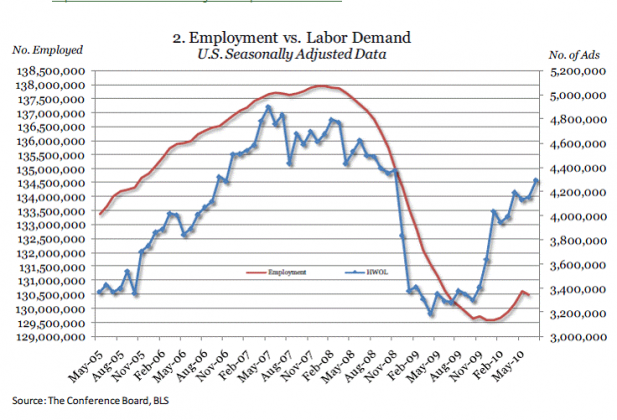Here is the pattern all recent recessions have followed, first temporary employment rises as businesses cautiously add cheaper temp workers. As the recovery gains traction, those workers then migrate from temp to permanent. All that means for the best view of the jobs market down the road, we need to look at the temporary worker situation.
Typically the lag between a sustained upturn in temp. staffing and non-farm payrolls rising is roughly 3 months. That has happened. Continued increases in temp staffing will then lead to continue non-farm payroll increases.
Is there demand from employers?
“After rising sharply in December and January, online job demand for the nation as a whole has settled into a more modest pattern over the last six months, with increases that have averaged about 43,000 per month,” said June Shelp, Vice President at The Conference Board. The gains in job demand vary across the country with some East Coast states —New York, New Jersey, Pennsylvania, Virginia, Delaware and Maryland—posting steady and strong upward trends throughout this year. Steady but more modest improvement better characterizes online job demand in other states like Washington, Ohio, Oregon and Texas.”
Also:
During the week of July 26–Aug. 1, 2010, temporary and contract employment grew by 1.75%, pushing the index up two points to a value of 94.
At a current index value of 94, U.S. staffing employment is 36% higher than the level reported for the first week of the current year and is 27% higher than the same weekly period in 2009. About ASA
The trend is clear, things are continuing to improve. Now, they may not be improving “at the rate” people want, but that does not diminish the fact they are still improving. It is something to keep in the back of your mind as you see the daily “the world could end if” procession on the boob tube.
Barron’s article on the subject

